The Furniture: Merrily We Dance in Hail Caesar!
 Monday, June 13, 2016 at 11:40AM
Monday, June 13, 2016 at 11:40AM "The Furniture" is our weekly series on Production Design. Here's Daniel Walber...
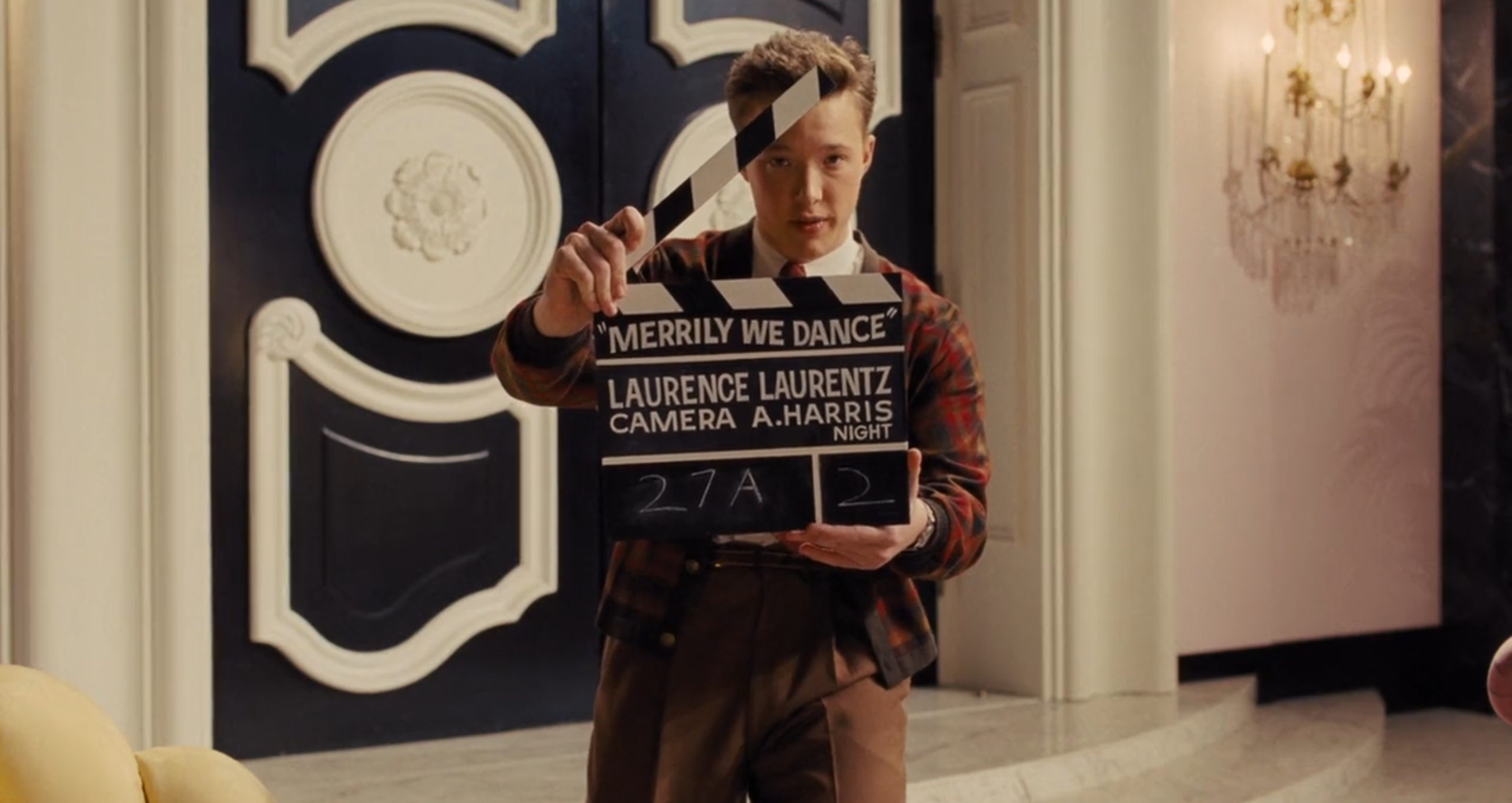
Hobie Doyle is out of his element. Tossed from the great outdoors into the drawing room by the head of the studio, Alden Ehrenreich’s cowboy careens into words with hilarious indelicacy. It might be the single funniest scene in the Coen Brothers’ Hail Caesar!, now available on DVD and Blu-Ray, or at least a close second place to the hysterical clerical debate. It also has one of the most interesting sets, if not the flashiest.
The production in question is "Merrily We Dance," a genteel comedy by the director Laurence Laurentz (Ralph Fiennes). A hodge-podge of George Cukor and Noel Coward, he stands in for the not-quite-closeted geniuses of the era. The film, which seems to fall somewhere between Private Lives and Dinner at Eight, sends a jilted lover to an upscale party from which the hostess has absconded to Lake Onondaga...
It is one crucial line, “would that it were so simple,” that undermines Hobie and causes all the humor. But it’s the set that lays the groundwork for his immediate failure. It’s a testament to the production team of Dawn Swiderski, Cara Brower and Coen regulars Jess Gonchor and Nancy Haigh that there’s depth in the design of Hail Caesar!, stretching well beyond the musical numbers.
It starts with the door, an ornate monster of floral carving and classic style. It dwarfs Hobie as he enters. He not only has trouble getting through it, he also can’t seem to keep it closed between takes.
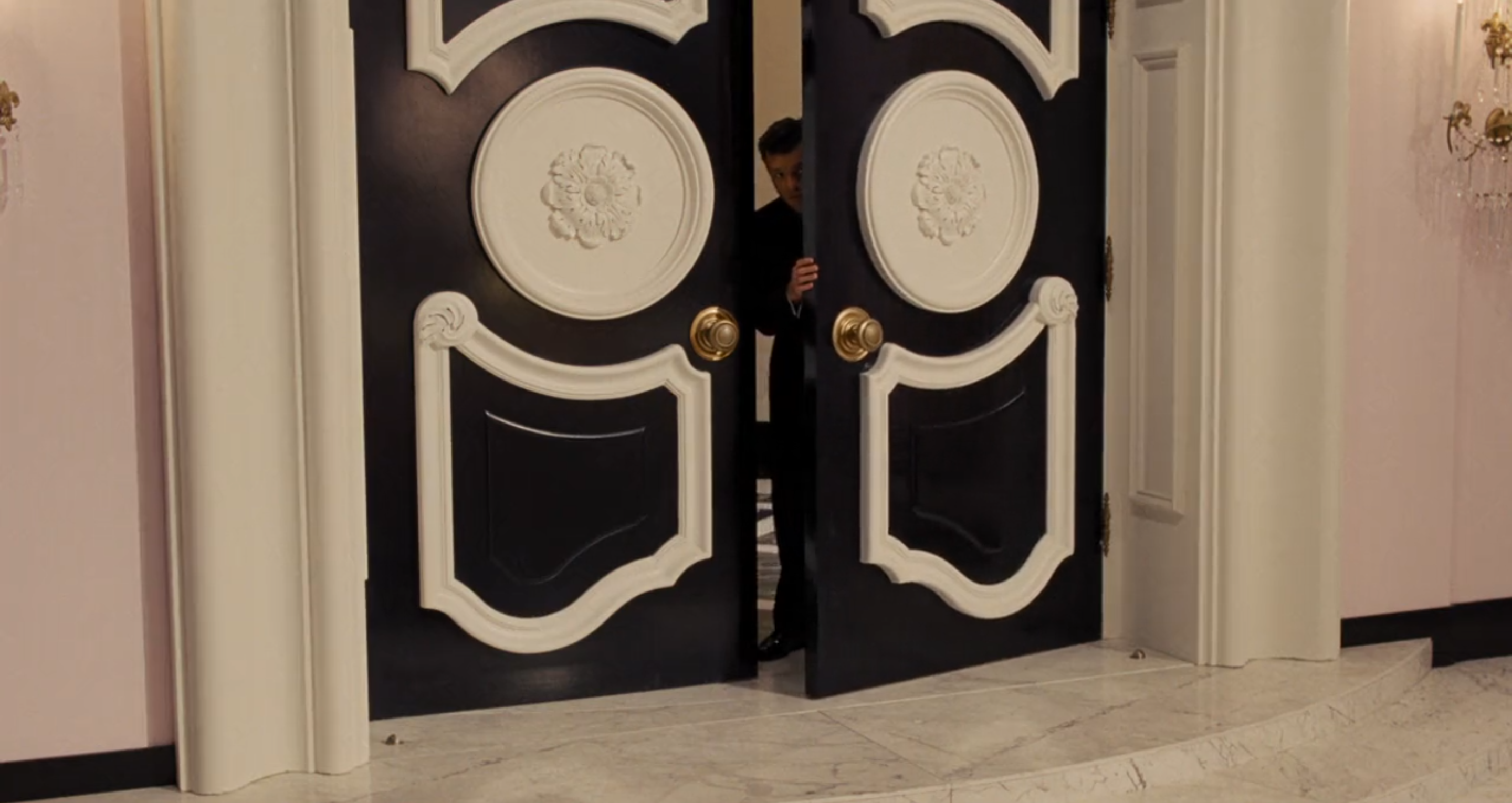
The rest of the room belittles the young rough rider with its color palette. Used to dusty deserts, he finds himself surrounded by pink chairs and cream couches. His co-star welcomes him to conversation with her bright red hair and her lethal green dress. Even the marble, black and white with tuxedo-like formality, seems to stare up at him disapprovingly.
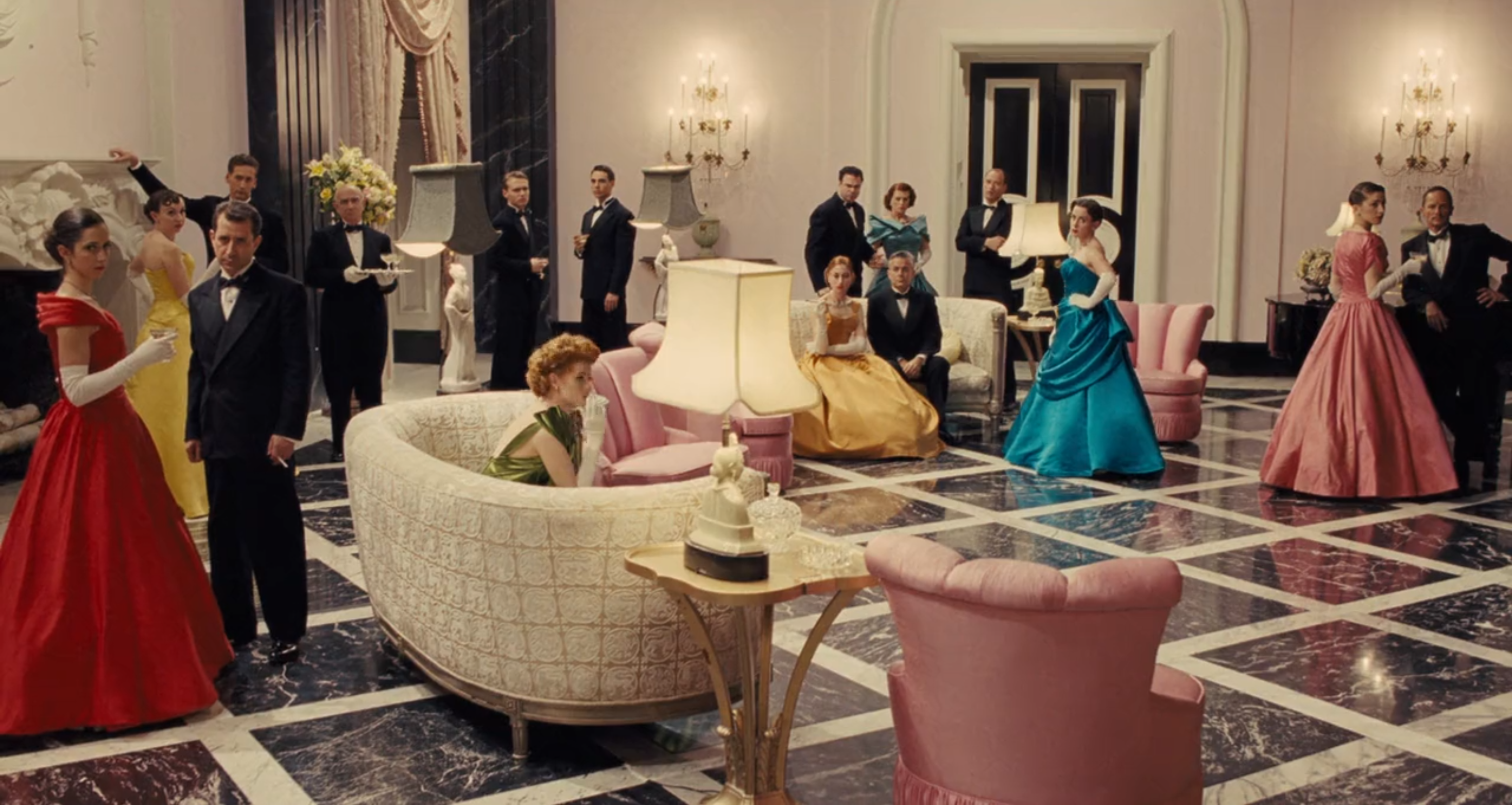
As Hobie flubs and flubs the line, the Coens step back. They take us behind the cameras, not only elongating the view of the curtains and the decorative molding, but also emphasizing the size of the crew. A crowd watches intently, filling the space from the boom down to the makeup tables.

As if that wasn’t enough, a view of the entire soundstage follows shortly thereafter. This quiet social scene only takes up a piece of this tremendous building.
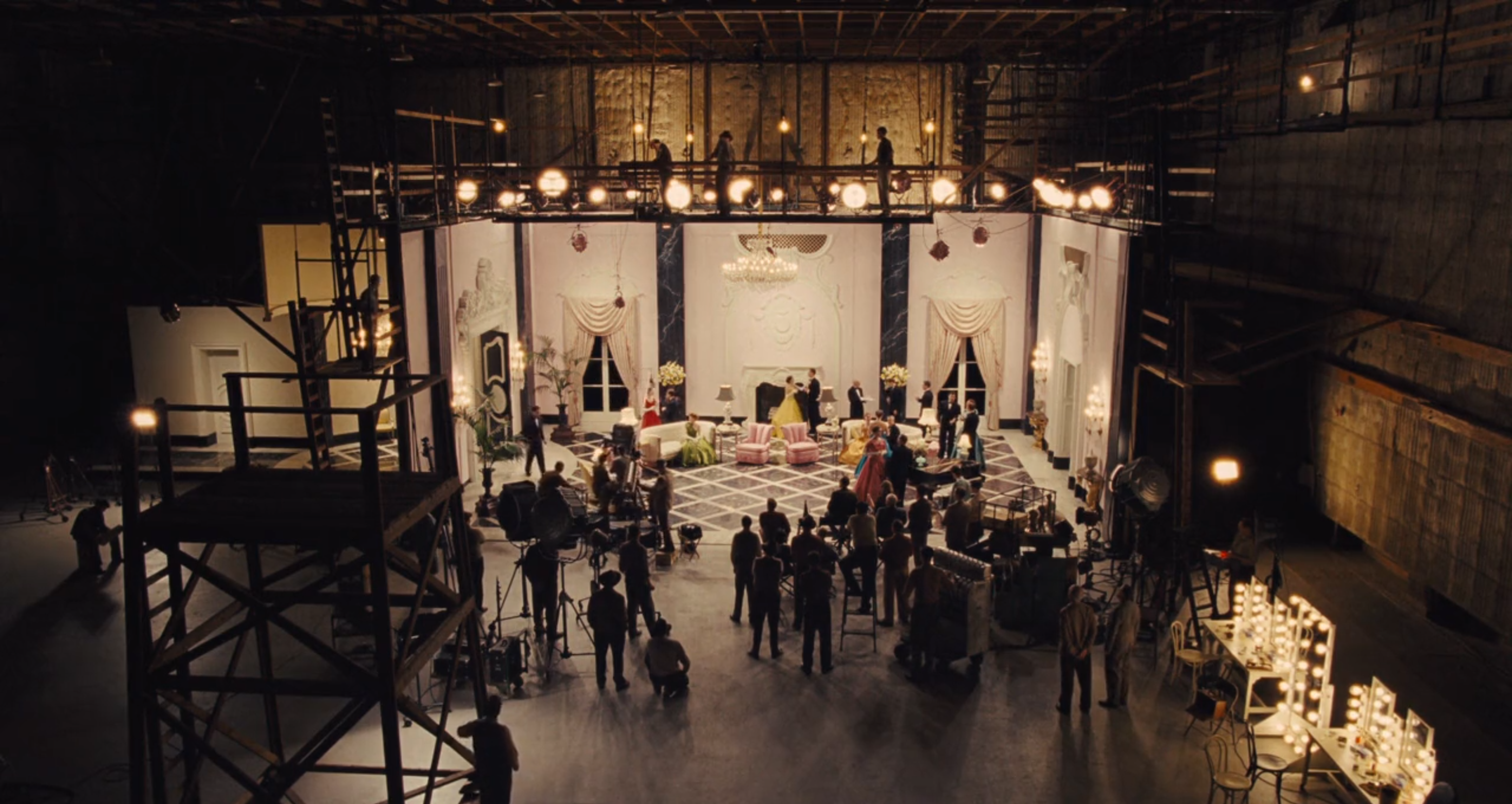
He seems even smaller from above, flailing and mucking up a well-oiled machine of director, cast and crew. Everyone else knows what they’re doing, from the catwalk to the marble floor. It’s hard to imagine a set that would make Hobie seem more out of place.
Soon the Coens cut back to the wanderings Eddie Mannix, releasing Hobie from his misery. There’s no resolution, and it’s hard to imagine Hobie getting it right. Yet a while later, Mannix checks into the editing room where C.C. Calhoun (Frances McDormand) is feverishly cutting and smoking. Suddenly, it all looks a bit different. Movie magic strikes.
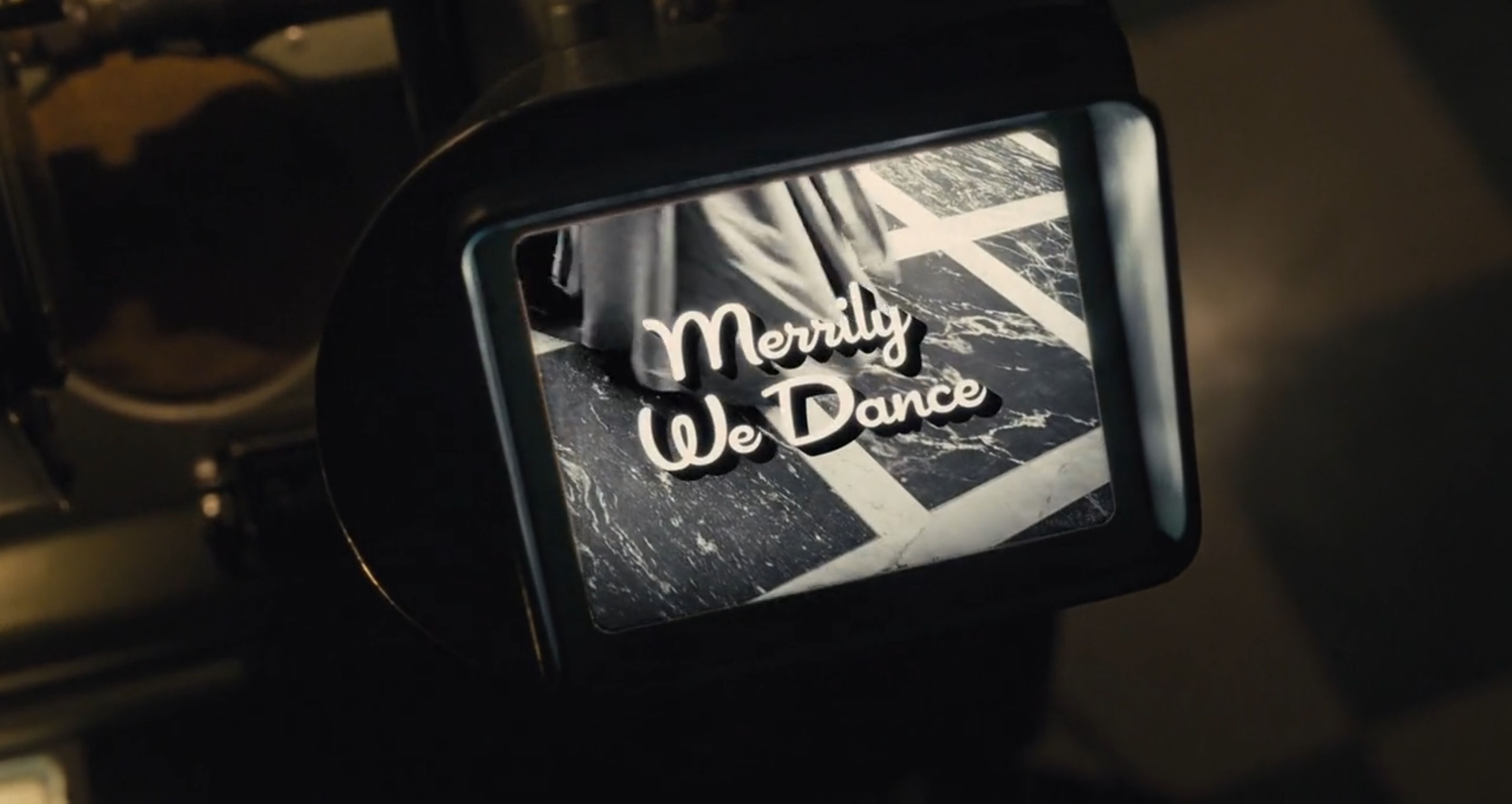
It’s helped out a bit by the music that C.C. sticks onto the opening credits, the famous waltz from Franz Lehar’s “The Merry Widow.” This glittering Viennese operetta was so popular, MGM made it into a movie three times. Take a look at this clip of the 1952 version (an Oscar nominee for production design!), starring Lana Turner and Fernando Lamas.
But it’s also helped out by the way things appear on the screen. Any clumsiness in Hobie’s delivery is instantly banished by the irresistible magnetism of his face. The tightness of the shot banishes the intimidating set, and those confrontational colors are erased by the transition to black and white. All that remains is Hobie Doyle, movie star.
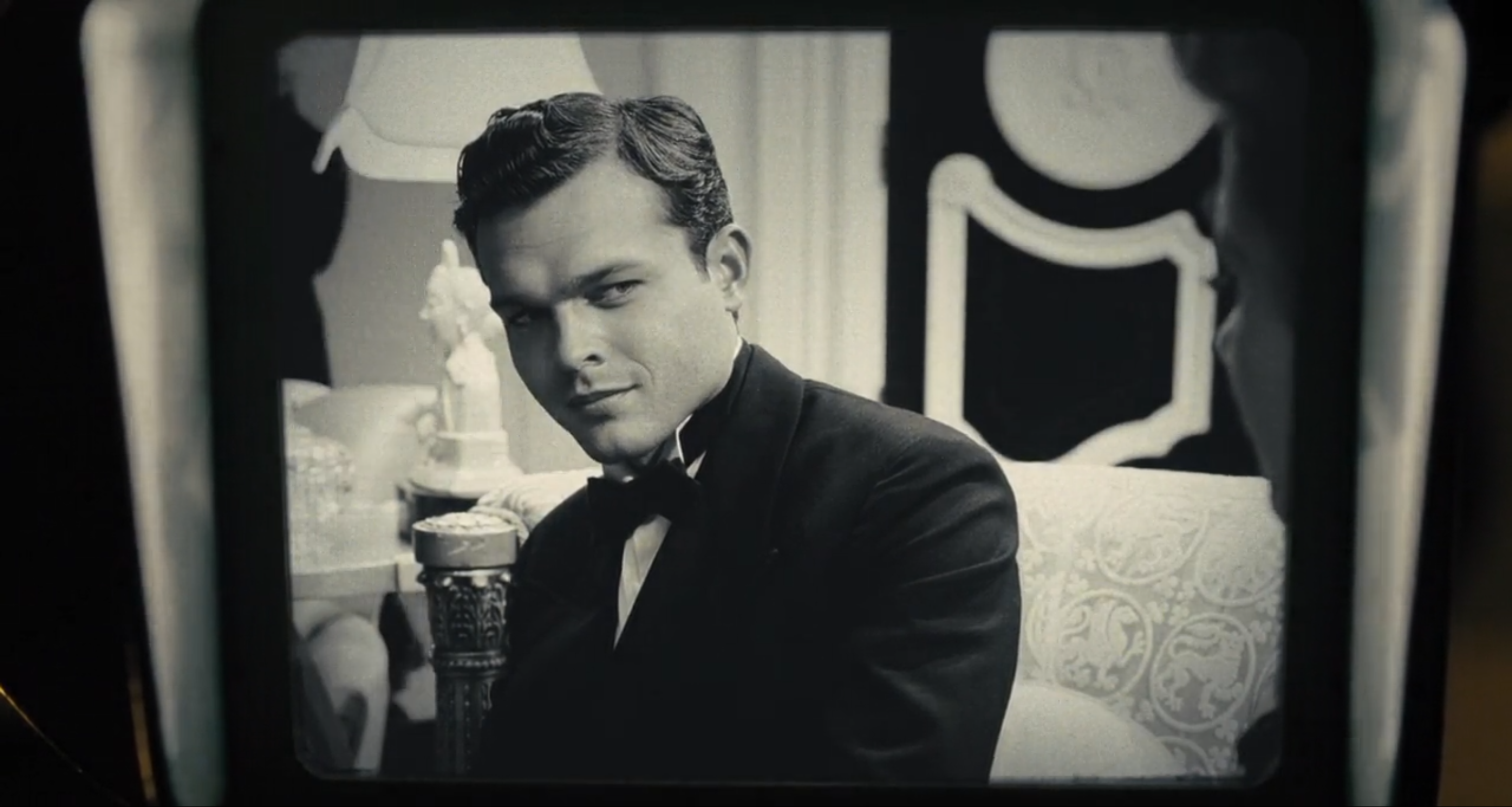
Related
Hail Caesar is a Secret Musical
Previous Highlights from 'The Furniture'
A Streetcar Named Desire, The Witch, Joy, The Exorcist



Reader Comments (7)
Terrific writeup, definitely the best scene in the movie.
Cosign with MDA. Bang-on in every detail.
I loved all of "Hail Caesar" but the scenes with Ralph Fiennes directing the hapless Hobie were the best. Great write up - as usual. Thanks.
As an addendum to my first post, I can't believe this is the same actor who underwhelmed in both Tetro and Twixt.
@MDA: "t'were" was the word he was waiting for
This is a perfect example of why I LOVE this feature. Puts into words everything we might feel while watching but only subconsciously.
And this was far and away the best scene in the movie.
I feel as though the masses are only now beginning to catch up with the genius of this magnificent film. Lest we forget, The Big Lebowski was considered a failure until its home video release, whereupon it became an "instant" timeless classic.